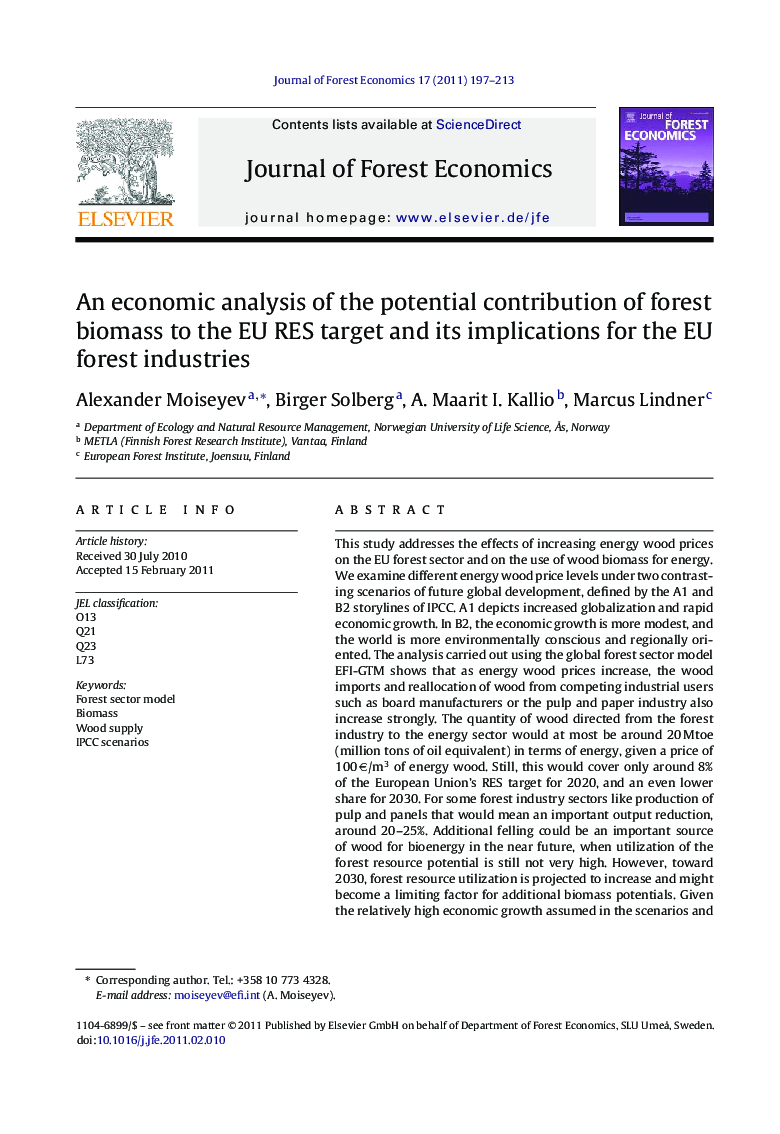| کد مقاله | کد نشریه | سال انتشار | مقاله انگلیسی | نسخه تمام متن |
|---|---|---|---|---|
| 92094 | 159905 | 2011 | 17 صفحه PDF | دانلود رایگان |

This study addresses the effects of increasing energy wood prices on the EU forest sector and on the use of wood biomass for energy. We examine different energy wood price levels under two contrasting scenarios of future global development, defined by the A1 and B2 storylines of IPCC. A1 depicts increased globalization and rapid economic growth. In B2, the economic growth is more modest, and the world is more environmentally conscious and regionally oriented. The analysis carried out using the global forest sector model EFI-GTM shows that as energy wood prices increase, the wood imports and reallocation of wood from competing industrial users such as board manufacturers or the pulp and paper industry also increase strongly. The quantity of wood directed from the forest industry to the energy sector would at most be around 20 Mtoe (million tons of oil equivalent) in terms of energy, given a price of 100 €/m3 of energy wood. Still, this would cover only around 8% of the European Union's RES target for 2020, and an even lower share for 2030. For some forest industry sectors like production of pulp and panels that would mean an important output reduction, around 20–25%. Additional felling could be an important source of wood for bioenergy in the near future, when utilization of the forest resource potential is still not very high. However, toward 2030, forest resource utilization is projected to increase and might become a limiting factor for additional biomass potentials. Given the relatively high economic growth assumed in the scenarios and the rather strong development in the demand for forest industry products, there is a considerable chance that the supply of wood biomass for energy will be largely limited to logging residues in the long run.
Journal: Journal of Forest Economics - Volume 17, Issue 2, April 2011, Pages 197–213